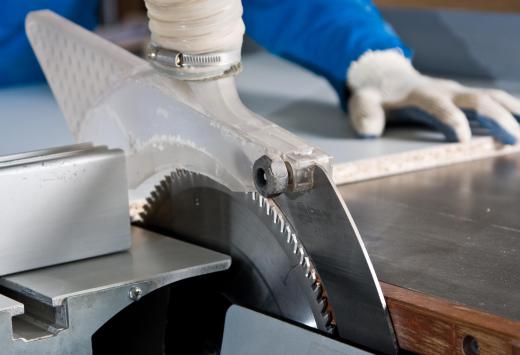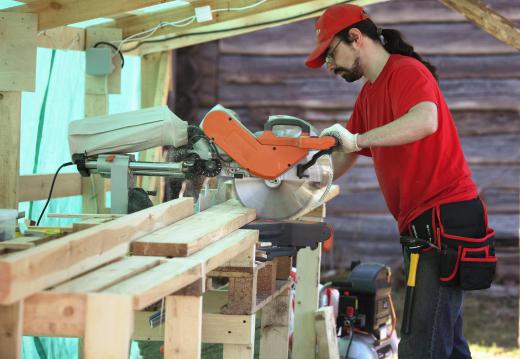A table saw is a simple woodworking machine with many useful applications. Its main components are a circular saw blade that is geared onto an arbor and run by an electric motor. The purpose of a table saw is to cut pieces of wood into different shapes and sizes. It is an important device in nearly every woodworking shop.
There are three major table saw categories. Portable saws are small and inexpensive, but are best used for small cutting jobs. A contractor’s saw is found in most woodworking shops and is the most common type. Cabinet saws provide the most motor power and the largest work surface, making them extremely accurate but also quite expensive.

There are a number of tools that can be mounted on a table saw to help cut various designs. For precision cutting, a sliding crosscut sled is a necessary fixture. Used to shape picture frames, it increases the crosscutting accuracy, cutting exact 45° miters. Extension tables can expand the work surface, allowing sheets as large as 4-by-8 feet (1.2-by-2.4 meters) to be handled. Other jigs and attachments can modify a regular machine.

Industrial table saws are more often used for larger pieces of wood. The higher it is projected above the table, the deeper the blade can cut into the material. Alternatively, a lower placement of the saw provides for shallower cuts. The modeler of an industrial table saw can also cut wood to very close tolerances.
Another important feature is the fence. It provides numerous improvements to the equipment and is sometimes more expensive than the table saw itself. When cutting wood on a table saw, the fence acts as a guide; by making sure the wood is flush against the fence, the woodworker ensures a straight cut. While it does not add power to the machine, it provides very accurate measurements allowing for faster and safer work. Although the quality of the material always plays a role, a good fence minimizes flex and the risk of bad cuts.
One major concern when it comes to table saws is safety. Many accidents happen every year with saws, and there are strict guidelines that need to be followed to reduce the risk of injury. Obvious rules include wearing safety goggles, maintaining a clear working place, and keeping one's distance from a running saw. It is also very important to use the proper blade for the right material and have the fence adjusted correctly. Failure to do so can jam the blade and cause kickbacking, which propels the piece of material back at the operator at a dangerous speed.
